- Home
- Edgar Allan Poe
The Narrative of Arthur Gordon Pym of Nantucket Page 14
The Narrative of Arthur Gordon Pym of Nantucket Read online
Page 14
The face of the country is hilly, although none of the hills can be called lofty. Their tops are perpetually covered with snow. There are several harbours, of which Christmas Harbour is the most convenient. It is the first to be met with on the northeast side of the island after passing Cape Francois, which forms the northern shore, and, by its peculiar shape, serves to distinguish the harbour. Its projecting point terminates in a high rock, through which is a large hole, forming a natural arch. The entrance is in latitude 48 degrees 40' S., longitude 69 degrees 6' E. Passing in here, good anchorage may be found under the shelter of several small islands, which form a sufficient protection from all easterly winds. Proceeding on eastwardly from this anchorage you come to Wasp Bay, at the head of the harbour. This is a small basin, completely landlocked, into which you can go with four fathoms, and find anchorage in from ten to three, hard clay bottom. A ship might lie here with her best bower ahead all the year round without risk. To the westward, at the head of Wasp Bay, is a small stream of excellent water, easily procured.
Some seal of the fur and hair species are still to be found on Kerguelen’s Island, and sea elephants abound. The feathered tribes are discovered in great numbers. Penguins are very plenty, and of these there are four different kinds. The royal penguin, so called from its size and beautiful plumage, is the largest. The upper part of the body is usually gray, sometimes of a lilac tint; the under portion of the purest white imaginable. The head is of a glossy and most brilliant black, the feet also. The chief beauty of plumage, however, consists in two broad stripes of a gold color, which pass along from the head to the breast. The bill is long, and either pink or bright scarlet. These birds walk erect; with a stately carriage. They carry their heads high with their wings drooping like two arms, and, as their tails project from their body in a line with the legs, the resemblance to a human figure is very striking, and would be apt to deceive the spectator at a casual glance or in the gloom of the evening. The royal penguins which we met with on Kerguelen’s Land were rather larger than a goose. The other kinds are the macaroni, the jackass, and the rookery penguin. These are much smaller, less beautiful in plumage, and different in other respects.
Besides the penguin many other birds are here to be found, among which may be mentioned sea-hens, blue peterels, teal, ducks, Port Egmont hens, shags, Cape pigeons, the nelly, sea swallows, terns, sea gulls, Mother Carey’s chickens, Mother Carey’s geese, or the great peterel, and, lastly, the albatross.
The great peterel is as large as the common albatross, and is carnivorous. It is frequently called the break-bones, or osprey peterel. They are not at all shy, and, when properly cooked, are palatable food. In flying they sometimes sail very close to the surface of the water, with the wings expanded, without appearing to move them in the least degree, or make any exertion with them whatever.
The albatross is one of the largest and fiercest of the South Sea birds. It is of the gull species, and takes its prey on the wing, never coming on land except for the purpose of breeding. Between this bird and the penguin the most singular friendship exists. Their nests are constructed with great uniformity upon a plan concerted between the two species—that of the albatross being placed in the centre of a little square formed by the nests of four penguins. Navigators have agreed in calling an assemblage of such encampments a rookery. These rookeries have been often described, but as my readers may not all have seen these descriptions, and as I shall have occasion hereafter to speak of the penguin and albatross, it will not be amiss to say something here of their mode of building and living.
When the season for incubation arrives, the birds assemble in vast numbers, and for some days appear to be deliberating upon the proper course to be pursued. At length they proceed to action. A level piece of ground is selected, of suitable extent, usually comprising three or four acres, and situated as near the sea as possible, being still beyond its reach. The spot is chosen with reference to its evenness of surface, and that is preferred which is the least encumbered with stones. This matter being arranged, the birds proceed, with one accord, and actuated apparently by one mind, to trace out, with mathematical accuracy, either a square or other parallelogram, as may best suit the nature of the ground, and of just sufficient size to accommodate easily all the birds assembled, and no more—in this particular seeming determined upon preventing the access of future stragglers who have not participated in the labor of the encampment. One side of the place thus marked out runs parallel with the water’s edge, and is left open for ingress or egress.
Having defined the limits of the rookery, the colony now begin to clear it of every species of rubbish, picking up stone by stone, and carrying them outside of the lines, and close by them, so as to form a wall on the three inland sides. Just within this wall a perfectly level and smooth walk is formed, from six to eight feet wide, and extending around the encampment—thus serving the purpose of a general promenade.
The next process is to partition out the whole area into small squares exactly equal in size. This is done by forming narrow paths, very smooth, and crossing each other at right angles throughout the entire extent of the rookery. At each intersection of these paths the nest of an albatross is constructed, and a penguin’s nest in the centre of each square—thus every penguin is surrounded by four albatrosses, and each albatross by a like number of penguins. The penguin’s nest consists of a hole in the earth, very shallow, being only just of sufficient depth to keep her single egg from rolling. The albatross is somewhat less simple in her arrangements, erecting a hillock about a foot high and two in diameter. This is made of earth, seaweed, and shells. On its summit she builds her nest.
The birds take especial care never to leave their nests unoccupied for an instant during the period of incubation, or, indeed, until the young progeny are sufficiently strong to take care of themselves. While the male is absent at sea in search of food, the female remains on duty, and it is only upon the return of her partner that she ventures abroad. The eggs are never left uncovered at all—while one bird leaves the nest, the other nestling in by its side. This precaution is rendered necessary by the thieving propensities prevalent in the rookery, the inhabitants making no scruple to purloin each other’s eggs at every good opportunity.
Although there are some rookeries in which the penguin and albatross are the sole population, yet in most of them a variety of oceanic birds are to be met with, enjoying all the privileges of citizenship, and scattering their nests here and there, wherever they can find room, never interfering, however, with the stations of the larger species. The appearance of such encampments, when seen from a distance, is exceedingly singular. The whole atmosphere just above the settlement is darkened with the immense number of the albatross (mingled with the smaller tribes) which are continually hovering over it, either going to the ocean or returning home. At the same time a crowd of penguins are to be observed, some passing to and fro in the narrow alleys, and some marching with the military strut so peculiar to them, around the general promenade ground which encircles the rookery. In short, survey it as we will, nothing can be more astonishing than the spirit of reflection evinced by these feathered beings, and nothing surely can be better calculated to elicit reflection in every well-regulated human intellect.
On the morning after our arrival in Christmas Harbour the chief mate, Mr. Patterson, took the boats, and (although it was somewhat early in the season) went in search of seal, leaving the captain and a young relation of his on a point of barren land to the westward, they having some business, whose nature I could not ascertain, to transact in the interior of the island. Captain Guy took with him a bottle, in which was a sealed letter, and made his way from the point on which he was set on shore toward one of the highest peaks in the place. It is probable that his design was to leave the letter on that height for some vessel which he expected to come after him. As soon as we lost sight of him we proceeded (Peters and myself being in the mate’s boat) on our cruise around the coast, looking for seal. In th
is business we were occupied about three weeks, examining with great care every nook and corner, not only of Kerguelen’s Land, but of the several small islands in the vicinity. Our labours, however, were not crowned with any important success. We saw a great many fur seal, but they were exceedingly shy, and with the greatest exertions, we could only procure three hundred and fifty skins in all. Sea elephants were abundant, especially on the western coast of the mainland, but of these we killed only twenty, and this with great difficulty. On the smaller islands we discovered a good many of the hair seal, but did not molest them. We returned to the schooner on the eleventh, where we found Captain Guy and his nephew, who gave a very bad account of the interior, representing it as one of the most dreary and utterly barren countries in the world. They had remained two nights on the island, owing to some misunderstanding, on the part of the second mate, in regard to the sending a jollyboat from the schooner to take them off.
CHAPTER XV
On the twelfth we made sail from Christmas Harbour retracing our way to the westward, and leaving Marion’s Island, one of Crozet’s group, on the larboard. We afterward passed Prince Edward’s Island, leaving it also on our left, then, steering more to the northward, made, in fifteen days, the islands of Tristan d’Acunha, in latitude 37 degrees 8' S., longitude 12 degrees 8' W.
This group, now so well known, and which consists of three circular islands, was first discovered by the Portuguese, and was visited afterward by the Dutch in 1643, and by the French in 1767. The three islands together form a triangle, and are distant from each other about ten miles, there being fine open passages between. The land in all of them is very high, especially in Tristan d’Acunha, properly so called. This is the largest of the group, being fifteen miles in circumference, and so elevated that it can be seen in clear weather at the distance of eighty or ninety miles. A part of the land toward the north rises more than a thousand feet perpendicularly from the sea. A tableland at this height extends back nearly to the centre of the island, and from this tableland arises a lofty cone like that of Teneriffe. The lower half of this cone is clothed with trees of good size, but the upper region is barren rock, usually hidden among the clouds, and covered with snow during the greater part of the year. There are no shoals or other dangers about the island, the shores being remarkably bold and the water deep. On the northwestern coast is a bay, with a beach of black sand where a landing with boats can be easily effected, provided there be a southerly wind. Plenty of excellent water may here be readily procured; also cod and other fish may be taken with hook and line.
The next island in point of size, and the most westwardly of the group, is that called the Inaccessible. Its precise situation is 37 degrees 17' S. latitude, longitude 12 degrees 24' W. It is seven or eight miles in circumference, and on all sides presents a forbidding and precipitous aspect. Its top is perfectly flat, and the whole region is sterile, nothing growing upon it except a few stunted shrubs.
Nightingale Island, the smallest and most southerly, is in latitude 37 degrees 26' S., longitude 12 degrees 12' W. Off its southern extremity is a high ledge of rocky islets; a few also of a similar appearance are seen to the northeast. The ground is irregular and sterile, and a deep valley partially separates it.
The shores of these islands abound, in the proper season, with sea lions, sea elephants, the hair and fur seal, together with a great variety of oceanic birds. Whales are also plenty in their vicinity. Owing to the ease with which these various animals were here formerly taken, the group has been much visited since its discovery. The Dutch and French frequented it at a very early period. In 1790, Captain Patten, of the ship Industry, of Philadelphia, made Tristan d’Acunha, where he remained seven months (from August 1790 to April 1791) for the purpose of collecting sealskins. In this time he gathered no less than five thousand six hundred, and says that he would have had no difficulty in loading a large ship with oil in three weeks. Upon his arrival he found no quadrupeds, with the exception of a few wild goats; the island now abounds with all our most valuable domestic animals, which have been introduced by subsequent navigators.
I believe it was not long after Captain Patten’s visit that Captain Colquhoun, of the American brig Betsey, touched at the largest of the islands for the purpose of refreshment. He planted onions, potatoes, cabbages, and a great many other vegetables, an abundance of all which is now to be met with.
In 1811, a Captain Haywood, in the Nereus, visited Tristan. He found there three Americans, who were residing upon the island to prepare sealskins and oil. One of these men was named Jonathan Lambert, and he called himself the sovereign of the country. He had cleared and cultivated about sixty acres of land, and turned his attention to raising the coffee-plant and sugar-cane, with which he had been furnished by the American Minister at Rio Janeiro. This settlement, however, was finally abandoned, and in 1817 the islands were taken possession of by the British Government, who sent a detachment for that purpose from the Cape of Good Hope. They did not, however, retain them long; but, upon the evacuation of the country as a British possession, two or three English families took up their residence there independently of the Government. On the twenty-fifth of March 1824, the Berwick, Captain Jeffrey, from London to Van Diemen’s Land, arrived at the place, where they found an Englishman of the name of Glass, formerly a corporal in the British artillery. He claimed to be supreme governor of the islands, and had under his control twenty-one men and three women. He gave a very favourable account of the salubrity of the climate and of the productiveness of the soil. The population occupied themselves chiefly in collecting sealskins and sea elephant oil, with which they traded to the Cape of Good Hope, Glass owning a small schooner. At the period of our arrival the governor was still a resident, but his little community had multiplied, there being fifty-six persons upon Tristan, besides a smaller settlement of seven on Nightingale Island. We had no difficulty in procuring almost every kind of refreshment which we required—sheep, hogs, bullocks, rabbits, poultry, goats, fish in great variety, and vegetables were abundant. Having come to anchor close in with the large island, in eighteen fathoms, we took all we wanted on board very conveniently. Captain Guy also purchased of Glass five hundred sealskins and some ivory. We remained here a week, during which the prevailing winds were from the northward and westward, and the weather somewhat hazy. On the fifth of November we made sail to the southward and westward, with the intention of having a thorough search for a group of islands called the Auroras, respecting whose existence a great diversity of opinion has existed.
These islands are said to have been discovered as early as 1762, by the commander of the ship Aurora. In 1790, Captain Manuel de Oyarvido, in the ship Princess, belonging to the Royal Philippine Company, sailed, as he asserts, directly among them. In 1794, the Spanish corvette Atrevida went with the determination of ascertaining their precise situation, and, in a paper published by the Royal Hydrographical Society of Madrid in the year 1809, the following language is used respecting this expedition: “The corvette Atrevida practised, in their immediate vicinity, from the twenty-first to the twenty-seventh of January, all the necessary observations, and measured by chronometers the difference of longitude between these islands and the port of Soledad in the Manillas. The islands are three, they are very nearly in the same meridian; the centre one is rather low, and the other two may be seen at nine leagues’ distance.” The observations made on board the Atrevida give the following results as the precise situation of each island. The most northern is in latitude 52 degrees 37' 24″ S., longitude 47 degrees, 43' 15″ W.; the middle one in latitude 53 degrees 2' 40″ S., longitude 47 degrees 55' 15″ W.; and the most southern in latitude 53 degrees 15' 22″ S., longitude 47 degrees 57' 15″ W.
On the twenty-seventh of January 1820, Captain James Weddell, of the British navy, sailed from Staten Land also in search of the Auroras. He reports that, having made the most diligent search and passed not only immediately over the spots indicated by the commander of the Atrevida, but i
n every direction throughout the vicinity of these spots, he could discover no indication of land. These conflicting statements have induced other navigators to look out for the islands; and, strange to say, while some have sailed through every inch of sea where they are supposed to lie without finding them, there have been not a few who declare positively that they have seen them; and even been close in with their shores. It was Captain Guy’s intention to make every exertion within his power to settle the question so oddly in dispute.
We kept on our course, between the south and west, with variable weather, until the twentieth of the month, when we found ourselves on the debated ground, being in latitude 53 degrees 15' S., longitude 47 degrees 58' W.—that is to say, very nearly upon the spot indicated as the situation of the most southern of the group. Not perceiving any sign of land, we continued to the westward of the parallel of fifty-three degrees south, as far as the meridian of fifty degrees west. We then stood to the north as far as the parallel of fifty-two degrees south, when we turned to the eastward, and kept our parallel by double altitudes, morning and evening, and meridian altitudes of the planets and moon. Having thus gone eastwardly to the meridian of the western coast of Georgia, we kept that meridian until we were in the latitude from which we set out. We then took diagonal courses throughout the entire extent of sea circumscribed, keeping a lookout constantly at the masthead, and repeating our examination with the greatest care for a period of three weeks, during which the weather was remarkably pleasant and fair, with no haze whatsoever. Of course we were thoroughly satisfied that, whatever islands might have existed in this vicinity at any former period, no vestige of them remained at the present day. Since my return home I find that the same ground was traced over, with equal care, in 1822, by Captain Johnson, of the American schooner Henry, and by Captain Morrell in the American schooner Wasp—in both cases with the same result as in our own.

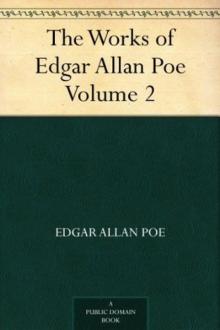 The Works of Edgar Allan Poe — Volume 2
The Works of Edgar Allan Poe — Volume 2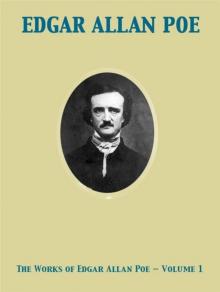 The Works of Edgar Allan Poe — Volume 1
The Works of Edgar Allan Poe — Volume 1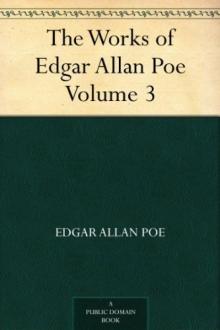 The Works of Edgar Allan Poe — Volume 3
The Works of Edgar Allan Poe — Volume 3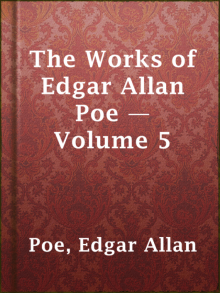 The Works of Edgar Allan Poe — Volume 5
The Works of Edgar Allan Poe — Volume 5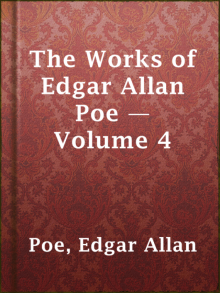 The Works of Edgar Allan Poe — Volume 4
The Works of Edgar Allan Poe — Volume 4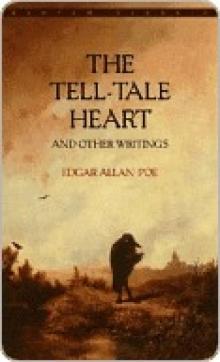 The Tell-Tale Heart
The Tell-Tale Heart The Raven (Penguin)
The Raven (Penguin)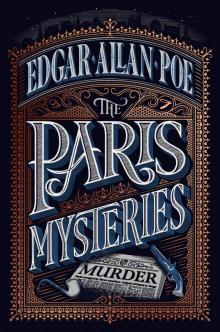 The Paris Mysteries
The Paris Mysteries Tales of Terror from Edgar Allan Poe
Tales of Terror from Edgar Allan Poe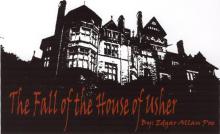 The Fall of the House of Usher
The Fall of the House of Usher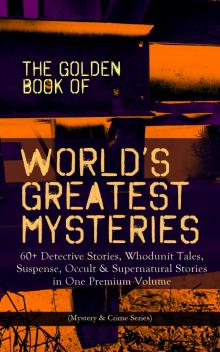 The Golden Book of World's Greatest Mysteries
The Golden Book of World's Greatest Mysteries The Narrative of Arthur Gordon Pym of Nantucket
The Narrative of Arthur Gordon Pym of Nantucket Ligeia
Ligeia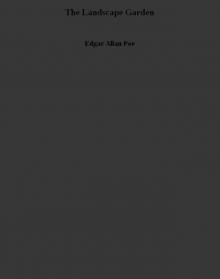 The Landscape Garden
The Landscape Garden Complete Tales & Poems
Complete Tales & Poems Great Tales and Poems of Edgar Allan Poe
Great Tales and Poems of Edgar Allan Poe The Colloquy of Monos and Una
The Colloquy of Monos and Una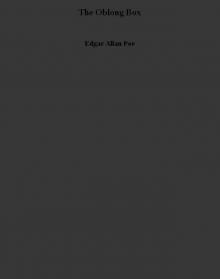 The Oblong Box
The Oblong Box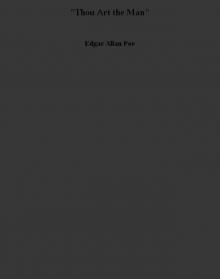 Thou Art the Man
Thou Art the Man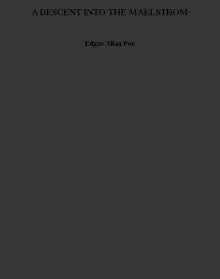 A DESCENT INTO THE MAELSTROM
A DESCENT INTO THE MAELSTROM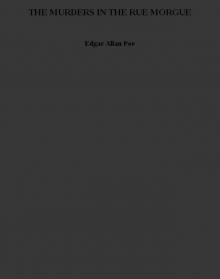 THE MURDERS IN THE RUE MORGUE
THE MURDERS IN THE RUE MORGUE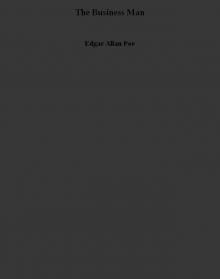 The Business Man
The Business Man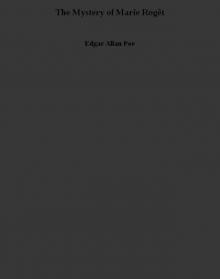 The Mystery of Marie Rogêt
The Mystery of Marie Rogêt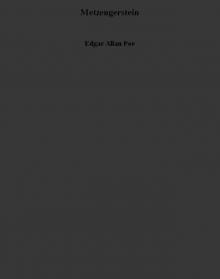 Metzengerstein
Metzengerstein The Man That Was Used Up
The Man That Was Used Up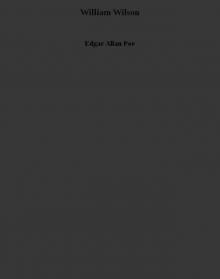 William Wilson
William Wilson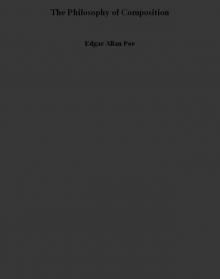 The Philosophy of Composition
The Philosophy of Composition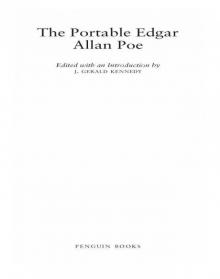 The Portable Edgar Allan Poe
The Portable Edgar Allan Poe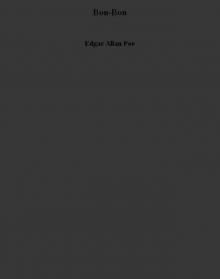 Bon-Bon
Bon-Bon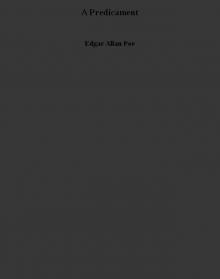 A Predicament
A Predicament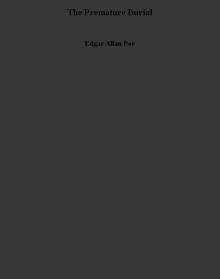 The Premature Burial
The Premature Burial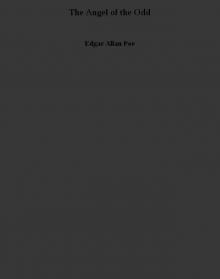 The Angel of the Odd
The Angel of the Odd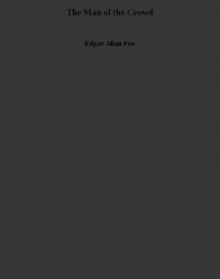 The Man of the Crowd
The Man of the Crowd Never Bet the Devil Your Head
Never Bet the Devil Your Head The Tell-Tale Heart and Other Writings
The Tell-Tale Heart and Other Writings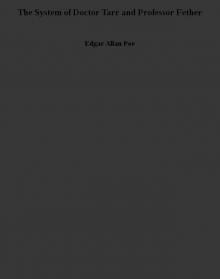 The System of Doctor Tarr and Professor Fether
The System of Doctor Tarr and Professor Fether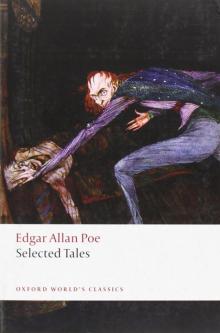 Selected Tales (Oxford World's Classics)
Selected Tales (Oxford World's Classics)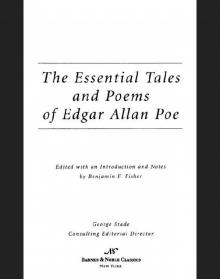 Essential Tales and Poems of Edgar Allan Poe (Barnes & Noble Classics Series)
Essential Tales and Poems of Edgar Allan Poe (Barnes & Noble Classics Series) MS. Found in a Bottle
MS. Found in a Bottle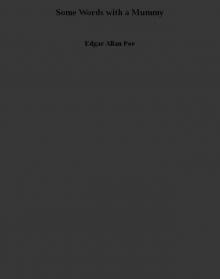 Some Words with a Mummy
Some Words with a Mummy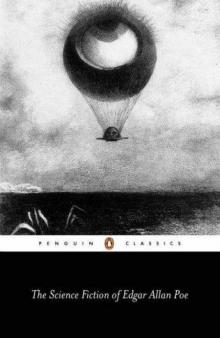 The Science Fiction of Edgar Allan Poe (Penguin Classics)
The Science Fiction of Edgar Allan Poe (Penguin Classics)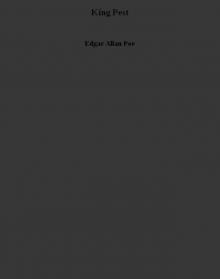 King Pest
King Pest CRITICISM
CRITICISM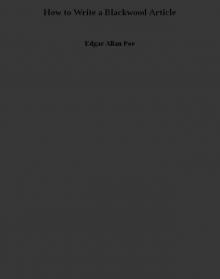 How to Write a Blackwood Article
How to Write a Blackwood Article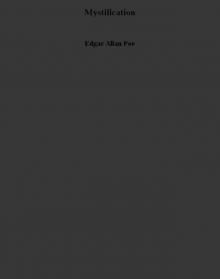 Mystification
Mystification Diddling Considered as One of the Exact Sciences
Diddling Considered as One of the Exact Sciences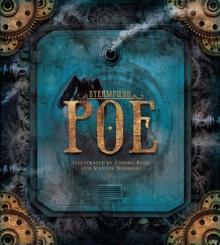 Steampunk Poe
Steampunk Poe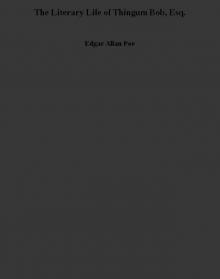 The Literary Life of Thingum Bob, Esq.
The Literary Life of Thingum Bob, Esq.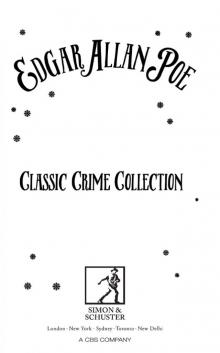 Classic Crime Collection
Classic Crime Collection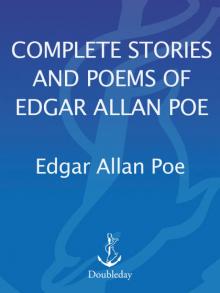 Complete Stories and Poems of Edgar Allen Poe
Complete Stories and Poems of Edgar Allen Poe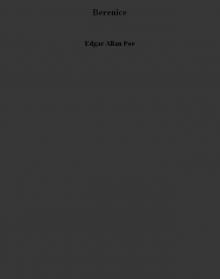 Berenice
Berenice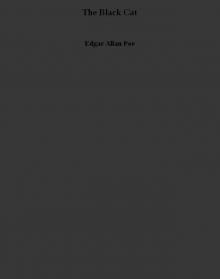 The Black Cat
The Black Cat The Slender Poe Anthology
The Slender Poe Anthology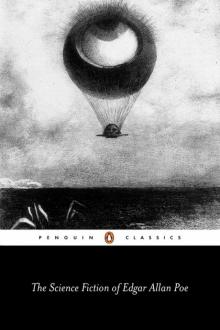 The Science Fiction of Edgar Allan Poe
The Science Fiction of Edgar Allan Poe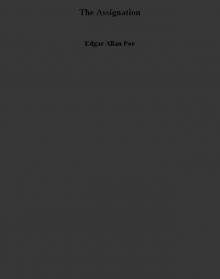 The Assignation
The Assignation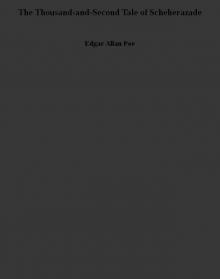 The Thousand-and-Second Tale of Scheherazade
The Thousand-and-Second Tale of Scheherazade The Raven and Other Short Stories
The Raven and Other Short Stories The Spectacles
The Spectacles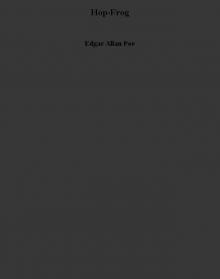 Hop-Frog
Hop-Frog The Purloined Letter
The Purloined Letter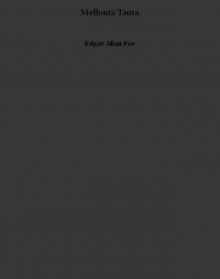 Mellonta Tauta
Mellonta Tauta The Balloon-Hoax
The Balloon-Hoax Landor's Cottage
Landor's Cottage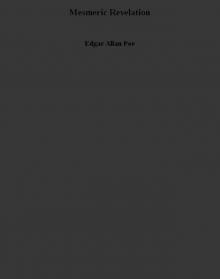 Mesmeric Revelation
Mesmeric Revelation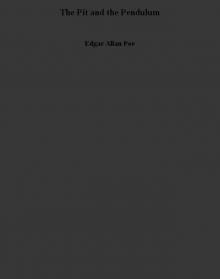 The Pit and the Pendulum
The Pit and the Pendulum